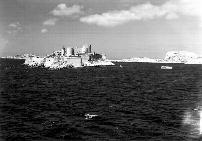
| The Castle Of Yew |

 |
The castle of Yew owes its celebrity in Alexandre Dumas. It is indeed there that it imprisoned its famous hero, the count of Assembles-Cristo and, for some Euros, one can still today, you show his dungeon... Published initially in serial, this novel tells misfortunes then the revenge on Edmond Dantés. Calumniated, Dantés is imprisoned the day of its marriage to the castle of Yew. |

This island was the den of good of hackers.
It is into 1381 that Jeanne of Naples, countess of Provence, adapts the written island. With the length of the centuries, the island of Yew was used as shelter for the smugglers, the fishermen and the hunters.
François Ier makes the decision to strengthen Marseilles. It orders the construction of a fort on the island of Yew (December 1524-1531).
On its island this fortress is inexpugnable. Indeed, nobody dared to attack it and it was never the theatre of least makes military. It was converted into prison of State into 1580. Many people were imprisoned in this fort.
From 1696 to 1713 much of Protestants were imprisoned in this fort during wars of religion.
The captain Castle, controlling of the Saint-Anthony, was imprisoned there to have brought back the plague from Lebanon in Marseilles. It is about the great plague of 1720 which lasted two years and which decimated about half of the population of Marseilles. It was released at the end of the epidemic, because one realized that it was not guilty, its boat having made the time of necessary forty before accosting.
Honore Gabriel Riqueti, count de Mirabeau, who was going to become later one of the tenors of the French revolution in 1774 was him also to imprison with the castle.
Under the Empire first the castle accomodated royalists until the end of the Empire in 1814. After 1848, they are especially political prisoners who are locked up in If until 1890.
In 1914 it will again be used as prison, first of all with the Germans and then, in 1915, with the French who had tried to escape the mobilization.
July 7, 1926, the castle is classified historic building.
During the Second World War, the Germans are useful themselves of the Castle of Yew for their coastal defense.
Today, it is possible to visit it, of the shuttles leaving the Old man-Port make the way between the island of Yew and the Friuli.